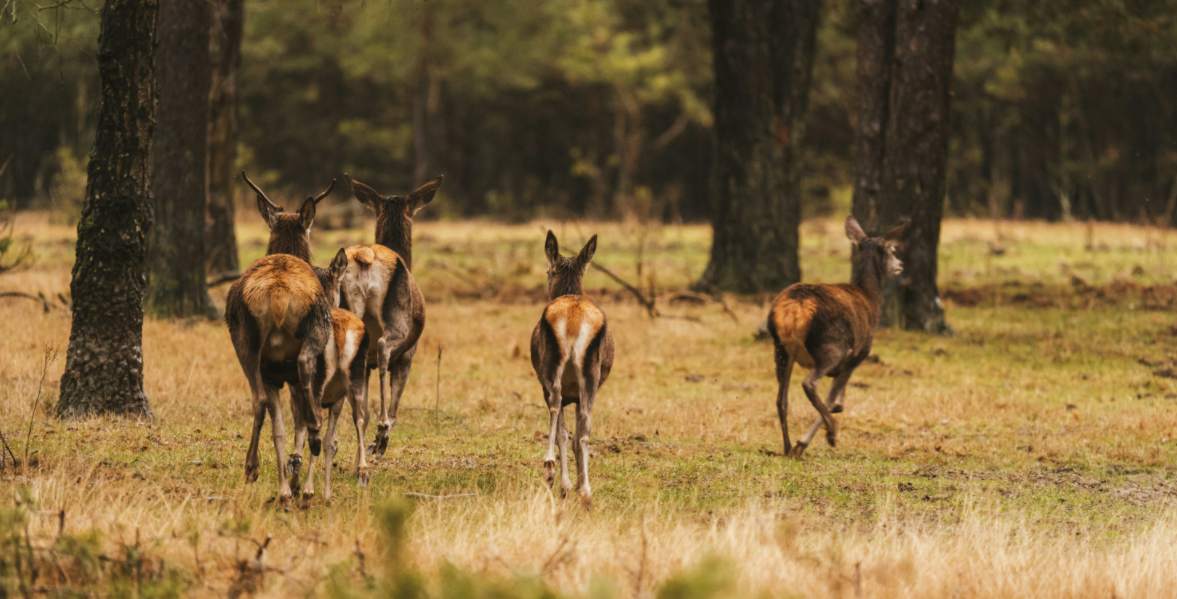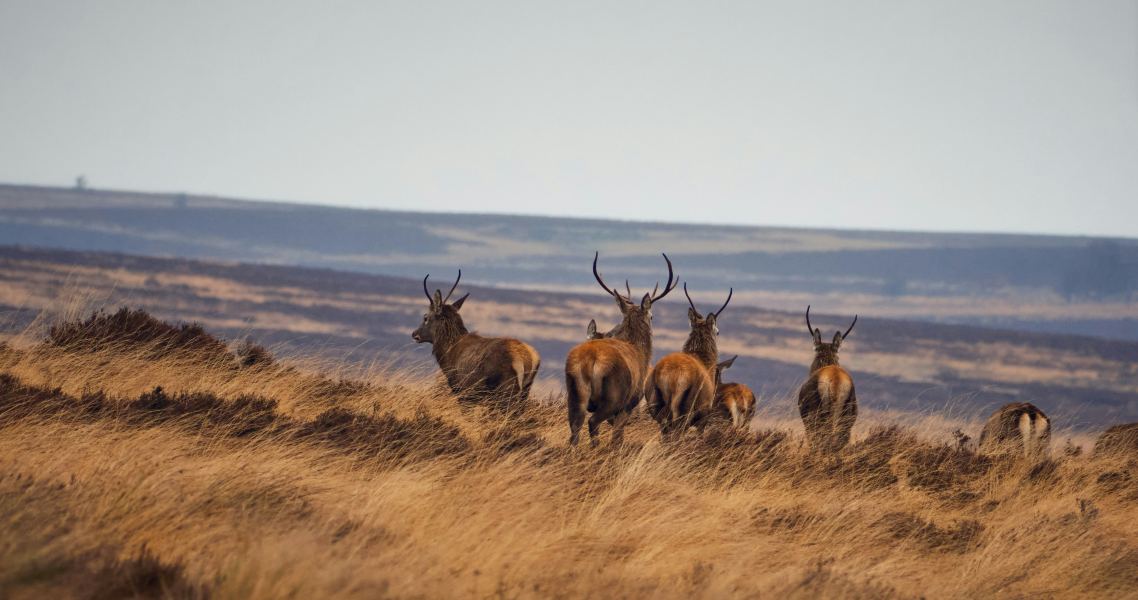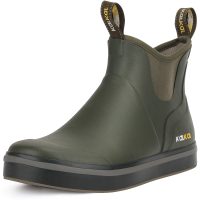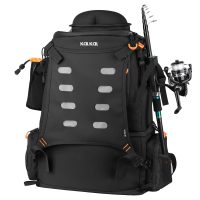All hunters wish to have their dream shot: a clean, ethical harvest after hours of preparation and patience. However, during such decisive moments, something weird can occur. Fingers shake, the pulse is racing, and such a great shot turns out to be a wobbly one. This immense rush of emotion and physical response is what is referred to as buck fever- a term that has a strong history in hunting culture. One that still proves to be a challenge to even the most experienced hunters.
Here in this detailed guide, we shall look at what buck fever is, its symptoms, causes, the effects it has on hunters, and most importantly, how to control it so that your time in the field is not only successful but also satisfying.
What Is Buck Fever?
Buck fever is a hunter term used to describe the extreme stimulation of adrenaline and anxiety when a hunter sees a game animal, usually a buck or other large deer.
It is not an illness or a medical problem, but a mental and physical reaction to a very stressful hunting scenario. Although usually linked to deer hunting, it may happen to hunters in any big game situation.
Origin in Hunting Culture
Buck fever is a term that is more than a hundred years old. It originated in the oral traditions and field experiences of the early American hunters. When deer hunting became more popular in North America, hunters started to refer to the excitement and the jittery energy. This would cause missed shots, poor aim, or hesitation at the most inopportune time.
With time, the concept of buck fever is used interchangeably with the fight to rein in emotions in critical moments of hunting. It also created a more comic term, deer fever, but both are interchangeable.
Is Buck Fever Real?
Absolutely. Someone can say that buck fever is only nerves. But it is a thing, and it has a science behind it. The human body is programmed to respond during high-stakes situations by fighting or fleeing.
Hunting, in particular, is an experience that results in an adrenaline rush on the occasion of seeing a target animal. This leads to a surge of physiological responses that can have a significant effect on motor control, breathing, and decision-making.
Hunters complain of anything ranging from tunnel vision to breathlessness and panic. Research in the fields of sports psychology and neurobiology proves that such reactions are typical in people exposed to high-stress and high-reward scenarios. Particularly in an adrenaline-intensive setting, such as hunting.
Buck Fever Symptoms
A lot of hunters also report a severe chest rush or a feeling that time slows down. The most well-known symptoms of buck fever are:
- Trembling hands or knees
- Rapid heartbeat (tachycardia)
- Sweaty palms
- Shortness of breath
- Tunnel vision or blurry sight
- Dry mouth
- Inability to speak clearly
- Difficulty focusing on the target
- Muscle tension or stiffness
Buck fever usually comes along with a wave of mental confusion, apart from the physical symptoms. These mind disturbances may cause late response or loss of opportunities.
- Overthinking the shot
- Second-guessing decisions
- Sudden loss of confidence
- Emotional overload—excitement mixed with anxiety or fear
What Triggers Buck Fever?
The condition of buck fever is most often caused by an intense combination of adrenaline, excitement, and a big game at stake. It is not the sight of a deer but the accumulation of emotions, readiness of the mind, and response of the organism to a rare event in the wild. Among the most widespread triggers are:
- Seeing a trophy-class buck or rare deer: Spotting a trophy deer or rare buck that you have been scouting and preparing to hunt after days or even weeks. A hunter can be overpowered by the size or the rarity of an animal.
- Being unprepared mentally or physically: Lack of mental or physical Being not prepared, both mentally and physically, will rattle the nerves when the time comes, and there may be overreactions or failure to act.
- Inexperience in live-fire hunting scenarios: The lack of experience in live-fire hunting conditions implies that a hunter does not realize how their mind and body will behave in a critical situation.
- Pressure to perform: Competition to succeed or the fear of failing, caused by either oneself or by peers, can make nerves worse, particularly when one competes or when in front of the camera.
- Emotional investment in the hunt: There is a psychological burden of the emotional investment in whether it is a bucket list animal or your first deer.
- Limited exposure to real-time shooting scenarios: The transition to the field can be even more intense in the case of limited exposure to real-time shooting, particularly in the case of the range-only shooters.
Is It Common?
Yes, buck fever is very prevalent, and there is nothing to be ashamed of. Even experienced hunters, those who have long years of experience behind them, acknowledge the effects of it. Especially in the case of a high-pressure situation.
It is practically a rite of passage for the novice. Some people tend to be calm in a pressurized situation. But buck fever has been experienced by almost every hunter at one time or another.
Having a realization that it is normal, even expected, can minimize the sense of shame or frustration to relate to it. Rather, it opens the possibility of finding out how to deal with it.

How Does It Affect Hunters?
A buck fever can be disabling as well as a learning experience. It often results in a
hunter missing the shot or sighting at all, or even hesitating to pull the trigger, in extreme form. In severe cases, it can even cause a person not to take the shot altogether.
It can also lead to:
- Poor shot placement (wounding an animal rather than killing it humanely)
- Premature trigger pull
- Failure to judge distance or wind accurately
- Unsafe firearm handling due to loss of focus
Buck fever can be a serious thing, though it is usually presented in a light-hearted way. Not only hunting but also the ethical hunting standards can be jeopardized by it.
One should realize that not every excitement is sourced by buck fever. Some amount of frothing at the mouth is not only normal but healthy. Or this is what makes hunting so exciting. According to the critical difference, it is control and performance.
All the excitement surrounding general hunts has the potential to boost awareness of surroundings, sharpness, and speed of reflexes. It is a healthy and controllable energy that renders you alert and active.
Deer fever is just the opposite, though the intense excitement turns to overload. The adrenaline is too much, the judgment becomes clouded, and one loses their balance and ability to maintain coordination. And the physical responses to this stimulation are not at all under control.
It is vital to note this difference. The right amount of excitement can lead to success. However, the undesired effects of buck fever can prove to be counterproductive. The skill to manage enthusiasm and not allow it to turn into buck fever often becomes the trait that can distinguish a novice hunter and a hunter with experience.
A Real-Life Buck Fever Example
To illustrate the experience, consider this anecdote from a Midwest whitetail hunter:
“I was 10 yards from the biggest buck I’d ever seen. My hands were shaking so bad I couldn’t even clip my release onto the bowstring. My heart was pounding in my ears. I drew the bow halfway, panicked, and let it down. The buck looked straight at me and bolted. I didn’t even get to aim. I had total buck fever. ”
It is not the kind of story that is unique. People who have shot a perfect score at the range in their practice go out to hunt an animal and fail miserably. All the adrenaline, pressure, and excitement turn into one of the moments that is challenging to prepare ahead of time until it takes place.
Other hunters explain that it feels like being out of the body. Also, observing himself or herself trying to accomplish something that he or she has done a thousand times before.
Whatever the type of hunting, both bowhunting and rifle hunting, thousands of people share their stories. Such as frozen fingers, tunnel vision, impaired perception, and lost opportunities. It is a very humbling experience of how strong and real buck fever can be.
How to Control Buck Fever: Tips for Hunters
While you may never eliminate buck fever entirely, you can manage and minimize its effects through mental training, preparation, and experience.
1. Preparation Techniques
- Scouting and Planning: Preparation yields confidence. Put in some hours to scout, trail camera set up, and learn deer movement. The more you know the terrain and how certain games go then the more you will feel in co
- Equipment Familiarity: Feel as cozy as you can with your weapon. Keep drawing, aiming, and shooting until it is natural. When using your bow or firearm, the moment you hesitate, you will have more chances of suffering buck fever.
- Simulated Practice: Make high-stress situations in practice. Make a friend countdown to five or provide a surprise action. So, there is adrenaline like a real This is useful in conditioning your mind and body to work under stress.
2. Mental Strategies
- Visualization: Visualization is applied to enhance peak performance in sports. Before going into the woods, you need to walk through the entire hunt. This involves imagining yourself finding the deer, raising your bow or bringing your rifle to your shoulder, holding your breath, and ultimately making a clean shot. By practicing this mental rehearsal, you can improve your focus and execution when it matters most.
- Breathing Control: When you glimpse a deer, do not get up in a hurry. Rather, stop and breathe slowly and deeply three times. This sends your nervous system a message to calm down and keep your adrenaline at bay.
- Mindfulness and Presence: Don’t focus on the past. Rather than fantasizing, about where you should hang the trophy buck on your wall, focus on the shot process: anchor, breath, aim, and be realistic, following baby steps helps to avoid overthinking.
3. Physical Methods
- Controlled Movements: Slowly and carefully, train your body to move slowly. Ragged movements enhance adrenaline, and smooth body motion helps one concentrate.
- Repetition Under Pressure: Muscle memory develops with a lot of repetition under time-limited or performance demands. The more habitual the movement turns out to be, the more likely you will perform it even in the case of severe em
- Fitness and Hydration: A healthy body will deal with adrenaline. Keep good cardiovascular health and be hydrated, particularly when hunting long distances. Stress reactions are enhanced by fatigue and dehydration.
4. Grounding Tools and Techniques
- Mental Anchors: Select a mental or visual image, such as breathing and squeezing, or see the vitals. You should repeat this in your mind when adrenaline works to remain cool.
- Checklists: By the time you pull the trigger, there are four things you should have checked in your mind: Is the deer in range? Do I see a clear-sighted picture? Do I have a Solid League?” These are tiny micro-moments that eliminate impulsiveness.
- Talk Yourself Through It: Don’t be afraid to whisper under your breath. Saying “take your time” or “steady now” gives your conscious brain something to focus on, drowning out the adrenaline chaos.
5. Experience is the Best Teacher
In a nutshell, the larger the number of animals you have seen and frightened, the more you will succeed in controlling your reactions. New and expectancy are some of the causes of buck fever. When you have some encounters, your body develops what to anticipate, and your mind becomes strong.
It can also be assisted by journaling about every hunt (including disappointing ones). Take notes, describe what occurred, note how you felt, and what you would like to have done differently. As time passes, you will be able to see patterns and growth.
Conclusion
Buck fever is as ancient as making the kill. It is a strong reminder that hunting is more of an emotional game than a physical game. Learning about pink fever and how to work with it will help turn disappointing lost shots into opportunities and, ultimately, success in the woods.
Keep in mind that deer fever is not a sickness. It is a badge showing that you take the deer hunt and the ethical take on the deer hunt seriously. You can recover and make buck fever your kind of determination with some preparation, mental tactics, and exposure to the situation.
And the next time that your heart beats a little faster, that your hands are trembling just a bit, smile a bit. You are not the only one, and you are also becoming a better hunter step by step.





















Leave a reply